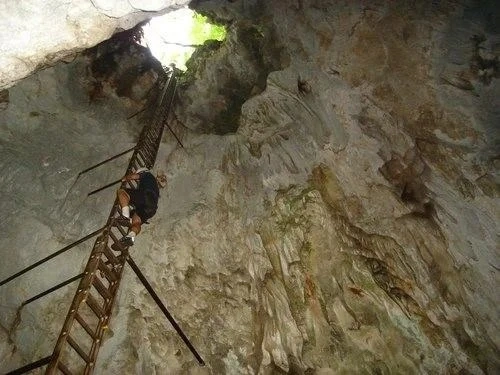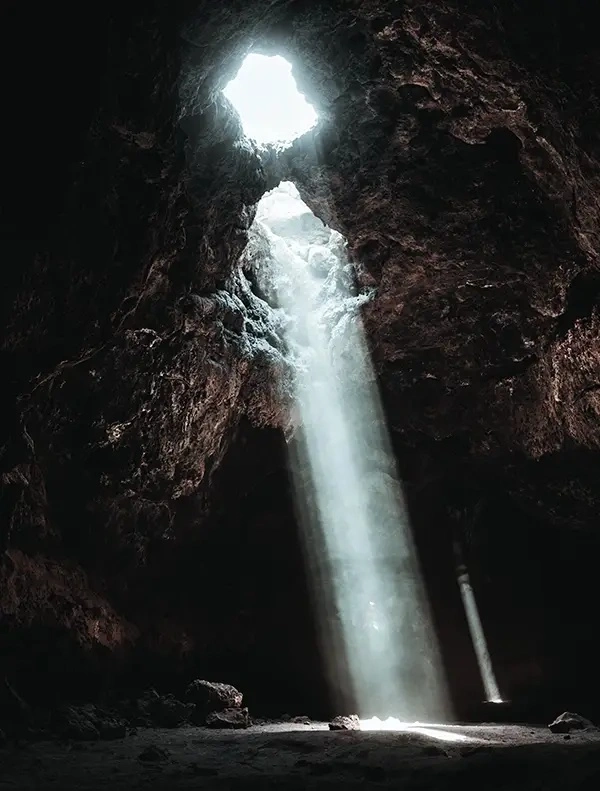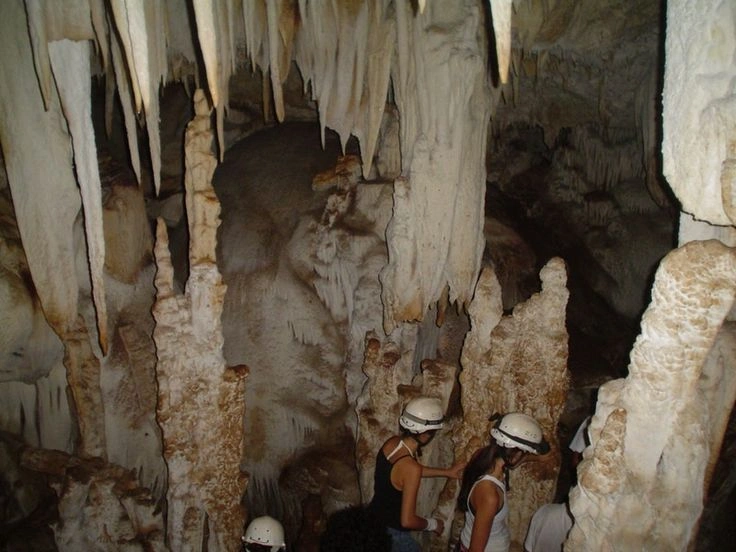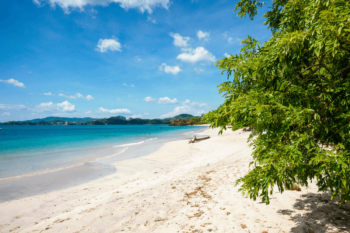Barra Honda National Park: What's Covered
Barra Honda National Park sits in Guanacaste’s interior near Nicoya, 1.5 hours (50 miles) from Liberia Airport (LIR) or 3 hours (115 miles) from San Jose Airport (SJO). Entry costs $10 USD with mandatory advance reservations; cave tours run $25 per person requiring arrival before 1pm. The 3-4 hour experience includes 1.5-hour uphill hike through forest (300m elevation), descending 60 meters into Terciopelo Cave via ladders, exploring ancient formations, and panoramic Nicoya Peninsula viewpoints. Driving yourself offers flexibility combining this unique spelunking adventure with nearby Guanacaste beaches like Tamarindo, Samara, or Playas del Coco.
Quick Facts:
- Location & Access: Guanacaste interior near Nicoya; 1.5 hrs from Liberia, 3 hrs from San Jose; no direct buses or Uber service
- Fees & Reservations: $10 park entry, $25 cave tour; advance booking mandatory via Facebook or +506-4000-0557
- Cave Tour Requirements: Must arrive before 1pm, ages 10+ only, 3-4 hour total experience including hiking and underground exploration
- Cave System: 42 known caves (only 19 explored), Terciopelo Cave tour descends 60 meters with historical/archaeological significance
- Physical Demands: Moderate fitness required; steep sometimes-slippery hiking, tall ladder descents, tight squeezes through narrow passages
Top Barra Honda Experiences:
1.5-Hour Forest Hike – Well-maintained trail climbing nearly 300m elevation through lush Guanacaste landscape, bird watching opportunities, wildlife sightings (iguanas, monkeys near cave entrance), panoramic Nicoya Peninsula viewpoint on descent
Terciopelo Cave Descent – Gear up with harnesses and helmets, descend 35 meters down tall ladder into first chamber, navigate tight squeeze to 60-meter depth, explore “la sala de huevos fritos” (fried eggs cave) where stalagmites resemble sunny-side-up eggs
Underground Exploration – Guided tour revealing cave formation processes over hundreds of thousands of years, complete darkness experience (headlamps off) creating profound silence, intricate stalactites/stalagmites shaped like flowers, grapes, teeth, faces
Bat Tours at Dusk – Guided tours witnessing thousands of bats emerging from caves for nightly insect hunts, unique ecological experience beyond standard daytime cave exploration
Historical Significance – Ancient artifacts and human remains discovered within cave system, 42 caves with only 19 explored leaving mystery surrounding remaining caverns
Essential Packing & Requirements:
- Footwear: Closed-toe hiking boots or sturdy sneakers with good ankle support; NO flip-flops for rocky terrain and ladder descents
- Clothing: Long pants protecting legs from scratches, bats, insect bites; light breathable fabrics for humid conditions
- Hydration & Snacks: Plenty of water and energy snacks; no shops or restaurants within park boundaries
- Sun Protection: Sunscreen, hat, sunglasses for exposed hiking portions before cave entrance
- Physical Fitness: Moderate condition required for steep hiking, ladder climbing, enclosed spaces; not suitable for claustrophobic visitors
- Vehicle Consideration: Standard car handles dry season; 4×4 recommended rainy season for some road conditions
Best as Day Trip: No lodging within park boundaries; conveniently located near popular Guanacaste beach destinations for easy integration into beach-focused itineraries. Alternative to typical Guanacaste activities like ziplining and beach hopping.
Transportation Options: Rent a car for flexibility exploring at your own pace and accessing nearby attractions, or book guided tours including roundtrip transportation. No public buses or Uber services reach park. Similar remote access considerations to Caño Negro or Monteverde requiring advance planning.
Combine with Guanacaste Attractions: Most visitors pair Barra Honda with Tamarindo surfing and nightlife (1.5 hrs), Samara Beach family-friendly atmosphere (1 hr), Playas del Coco diving, Conchal Beach white shells, or Flamingo Beach luxury resorts. Liberia Airport (LIR) is closest international gateway for Guanacaste exploration—learn about choosing the right Costa Rica airport for your itinerary.
Other Cave/Underground Experiences: Barra Honda offers Costa Rica’s most extensive cave system. Compare to Venado Caves near La Fortuna/Arenal for different spelunking options. Unlike beach-focused Guanacaste activities or cloud forest adventures in Monteverde, Barra Honda provides unique geological/archaeological perspective on Costa Rica’s natural diversity.
Explore More National Parks: After Barra Honda, consider Manuel Antonio for beach-rainforest combination, Arenal Volcano National Park for volcanic landscapes, Tortuguero for canal ecosystems, Poas Volcano for crater viewing, or Palo Verde for wetland bird watching. Each park showcases different aspects of Costa Rica’s incredible biodiversity.
If you need any help with a Costa Rica car rental, contact us now!
Discover the Wonders of Barra Honda's Caves and Hiking Trails
Guanacaste, a province celebrated for its stunning beaches, often draws travelers seeking sun, sand, and surf. However, beyond the coastal allure lies a hidden gem – Barra Honda National Park. This park, located near Nicoya, offers a unique experience that contrasts with the typical Guanacaste itinerary. While volcanoes, rivers, and waterfalls add to the province’s diverse landscape, the caves of Barra Honda truly set it apart.
If you’re looking for an alternative to beach hopping and ziplining, consider venturing into the depths of Barra Honda National Park. Embark on a cave tour, explore the intricate network of underground chambers, and witness the park’s captivating geological formations.
This guide provides a comprehensive overview of Barra Honda National Park, including details about the cave tours and hiking trails, ensuring an unforgettable adventure amidst Guanacaste’s natural wonders.
Planning Your Visit to Barra Honda National Park: Essential Information
To make the most of your adventure in Barra Honda National Park, it’s essential to be aware of the entrance fees and operating hours. Foreign visitors can expect to pay 5000 colones (around $10 USD) for park entry, while the exhilarating caving tour costs approximately 12,5000 colones ($25 USD) per person. These fees apply if you’re driving to the park with your own vehicle, like a trusty rental from Vamos Rent A Car.
Keep in mind that reservations are now mandatory for Barra Honda National Park. To avoid disappointment and ensure your spot, make sure to book in advance through their Facebook page or by calling them directly at +506-4000-0557.
If you prefer not to drive, various tours offer convenient roundtrip transportation, which is a great option since there aren’t any direct buses or Uber services available in this area.
- Important note for cave explorers: you must arrive at the park before 1 PM to join a tour, and only children over 10 years old are permitted on the spelunking adventure. The entire caving experience typically lasts around 3-4 hours, so plan your day accordingly.
Where is Barra Honda National Park?
Located in the Guanacaste province, Barra Honda National Park is easily accessible from both Liberia and San José. If you’re flying into Liberia International Airport, the park is a scenic 80-kilometer (50-mile) drive, taking approximately 1 hour and 30 minutes. For those starting their journey in San José, expect a slightly longer but equally picturesque 185-kilometer (115-mile) drive, which typically takes around 3 hours.
- With a reliable rental car from Vamos Rent A Car, you can enjoy the freedom and flexibility to explore the park and surrounding areas at your own pace. The drive itself is an adventure, offering glimpses of Costa Rica’s stunning landscapes and charming towns along the way.

Delving into the Depths: The Barra Honda Cave Tour
While Barra Honda National Park offers fantastic hiking trails for those who prefer to stay above ground, the true highlight lies beneath the surface: its fascinating cave system. To explore these subterranean wonders, you’ll need to join a guided tour – a necessary measure to protect the delicate ecosystem and ensure visitor safety.
Of the 42 known caves within the park, only 19 have been explored, leaving a sense of mystery and intrigue surrounding the remaining caverns. These caves hold immense historical and archaeological significance, as evidenced by the discovery of ancient artifacts and human remains within their depths.
- The most popular cave tour takes you to the mesmerizing Terciopelo Cave, a journey that descends 60 meters (197 feet) into the Earth. The adventure begins with an invigorating hike, climbing to an altitude of nearly 300 meters through the lush forest. Once you reach the cave entrance, prepare to be amazed by the intricate formations and learn about the cave’s history and geological importance from your knowledgeable guide. The entire caving experience, including the hike and exploration, typically lasts around 3-4 hours.
Reaching New Heights: Hiking to the Caves
Our Barra Honda adventure began with an invigorating 1.5-hour hike through the park’s verdant landscape. While the trail itself is well-maintained and relatively flat, the uphill climb under the warm Costa Rican sun certainly got our hearts pumping!
Along the way, we were serenaded by a symphony of birdsong and even spotted some fascinating wildlife. The lush surroundings provided a welcome respite from the heat, and we took a refreshing water break to recharge before continuing our ascent.
This scenic trek serves as a reminder that exploring Barra Honda National Park is a rewarding experience that engages both body and mind. So, pack plenty of water, wear comfortable hiking shoes, and prepare to be captivated by the natural beauty that unfolds with every step.

Descending into the Depths: The Cave Entrance
After a rewarding hike, the entrance to the cave finally came into view, marked by clear signage. As we approached, we were greeted by a surprising sight: enormous iguanas basking in the sun and playful monkeys swinging through the trees!
Following a short break to catch our breath and soak in the scenery, it was time to gear up for our descent. With harnesses securely fastened and helmets in place, we cautiously made our way down a tall ladder leading into the cave’s depths.
While the initial climb down might seem a bit daunting, rest assured that safety is a top priority. Experienced guides ensure you’re properly equipped and provide support throughout the journey.
And once you reach the bottom… prepare to be awestruck! The contrast between the vibrant world above and the serene stillness of the cave is truly remarkable. Down here, time seems to stand still. There’s no wind, no rustling leaves, no scurrying creatures. Instead, you’re surrounded by an ethereal silence and the mesmerizing beauty of stalactites and stalagmites sculpted over millennia.
It’s a humbling experience to stand 35 meters below the surface, surrounded by these intricate formations. The cave’s cool, damp air and the echoing silence create an otherworldly atmosphere that’s both captivating and awe-inspiring.
Unveiling the Secrets Within: Exploring the Cave's Depths
Our guide captivated us with tales of the cave’s formation and history, painting a vivid picture of the geological processes that shaped this subterranean wonderland. After about 30 minutes immersed in this fascinating world, she directed our attention to a narrow opening, signaling our descent into the next cavern.
This second descent led us through a tight squeeze – a thrilling challenge for adventurous spirits! – down to a depth of 60 meters. We emerged into a chamber aptly named “la sala de huevos fritos” (the fried eggs cave), where the stalagmites resembled a pan full of sunny-side-up eggs.
Here, our guide instructed us to sit and extinguish our headlamps. The sudden plunge into absolute darkness and silence was both overwhelming and awe-inspiring. No visual distractions, no sounds to break the stillness – just the profound sense of being enveloped by nothingness. It’s a powerful experience that gives you a glimpse into the vastness of time and the Earth’s ancient history.
Our guide explained that these formations, untouched by light or wildlife, have been slowly evolving for hundreds of thousands of years. Water droplets cling to the tips of the columns, creating a mesmerizing array of shapes: delicate flowers, clusters of grapes, sharp teeth, and even human-like faces.
Exploring these hidden chambers is like stepping back in time, a journey into a world where nature’s artistry reigns supreme. It’s a reminder of the incredible forces that have shaped our planet and the enduring beauty that lies hidden beneath the surface.

Emerging from the Depths: A Sense of Accomplishment
Returning to the surface after our cave exploration brought a profound sense of accomplishment. We had faced our fears, challenged ourselves physically, and connected with a truly unique and awe-inspiring part of the Earth. It was an exhilarating experience that left us feeling invigorated and deeply moved.
After a well-deserved rest, we began our descent back down the trail. Along the way, our guide led us to a breathtaking viewpoint overlooking the vast Nicoya Peninsula. The panoramic vista was simply stunning, a fitting end to our unforgettable journey into the heart of Barra Honda National Park.
This adventure is a must-do for anyone seeking an authentic Costa Rican experience. It’s a chance to step off the beaten path, explore hidden wonders, and connect with nature on a deeper level. So, pack your sense of adventure, rent a car from Vamos Rent A Car, and prepare to be amazed by the beauty and wonder of Barra Honda National Park.
Tips for Exploring Barra Honda National Park
Ready for an underground adventure? Barra Honda National Park, famed for its intricate cave system, offers a thrilling experience for those who dare to venture into the depths. Here’s what you need to know before you go:
Gearing Up:
- Fitness Matters: The journey to the caves involves a steep, sometimes slippery hike and climbing a tall ladder to descend into the caverns. So, make sure you’re in relatively good physical condition and wear comfortable clothing that allows for a good range of movement.
- No Fear of the Dark: Descending into the caves means entering a world of complete darkness. If you’re claustrophobic or uncomfortable in enclosed spaces, this might not be the adventure for you. However, if you’re up for the challenge, it’s an incredibly unique experience.
Getting There:
- Hit the Road: Having your own car gives you the freedom to explore the park at your own pace and venture off the beaten path. Plus, you can easily access other nearby attractions. Remember to check road conditions before you go, as some routes may require a 4×4 vehicle, especially during the rainy season.
- Tour Option: If you prefer to leave the driving to someone else, several tour companies offer guided trips to Barra Honda. This is a great option if you want to learn more about the park’s history, geology, and ecology from experienced guides.
Essential Packing List:
- Footwear: Leave the flip-flops at the beach! Closed-toe shoes with good ankle support are essential for navigating uneven, rocky terrain and ladder descents. Hiking boots or sturdy sneakers are ideal.
- Clothing: Wear long pants to protect your legs from scratches, insect bites, and the occasional bat guano. Light, breathable fabrics are best for the humid conditions.
- Hydration and Fuel: Bring plenty of water and snacks to keep you energized throughout your exploration. There are no shops or restaurants within the park, so it’s important to be prepared.
- Sun Protection: Don’t forget sunscreen, a hat, and sunglasses for the hike to the caves. The Costa Rican sun can be intense, even when it’s cloudy.

Planning Your Adventure:
- Day Trip: Barra Honda is best explored as a day trip, as there are no lodging options within the park boundaries. This allows you to focus on the caves and trails without worrying about overnight accommodations.
- Location, Location, Location: The park is conveniently located within driving distance of popular tourist destinations like Tamarindo, Samara, and Playas del Coco. This makes it easy to incorporate a visit to Barra Honda into your itinerary.
Beyond the Caves:
- Hiking: Barra Honda isn’t just about the caves! Explore the park’s network of hiking trails, ranging from easy strolls to more challenging climbs. You’ll be rewarded with stunning views of the surrounding countryside and opportunities to spot wildlife.
- Bat Tours: For a truly unique experience, join a guided bat tour at dusk. Witness thousands of bats emerging from the caves as they embark on their nightly hunt for insects.
Embrace the Challenge:
- The hike to the caves may be demanding, but the experience of descending into these geological wonders is truly rewarding. Barra Honda National Park offers a unique opportunity to connect with nature and discover a hidden side of Costa Rica.
Read about other national parks in Costa Rica below!
Palo Verde National Park: Manuel Antonio National Park
Poas Volcano National Park: Arenal Volcano National Park




